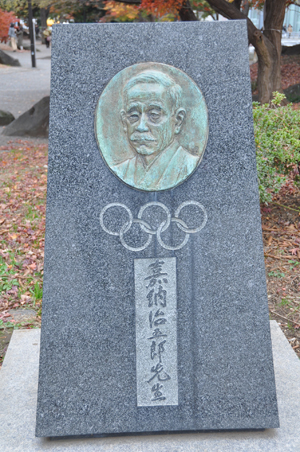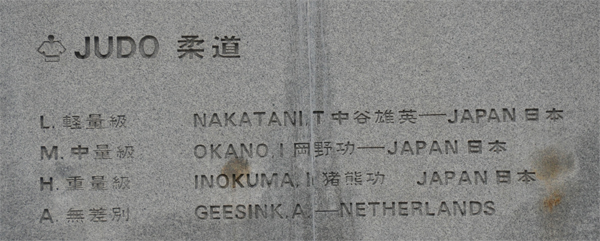This year’s Tokyo Grand Slam was held in the Tokyo Metropolitan Gymnasium, which is right next to the 1964 Olympic stadium. Half as many countries participated in this event as did in the 2010 World Championships in Tokyo just three months prior. I wonder if it had anything to do with the fact that, as the host nation, Japan could enter four players per division.
Judo matches are short and so prone to the influence of referees that it’s hard to stay on top for any length of time. The Japanese are so deep that new names pop up every tournament. World champions Morishita, Asami, Ueno, Harrison, and Sugimoto failed to place in this event, while Kamikawa managed to win a bronze.
It appeared to me that the rules were enforced much like they were for the World Championships. For the first two days referees were consistent, but on the last day referees starting giving more penalties for no apparent reason. This was especially true once again for stepping out of bounds, which pretty much went unpenalized for the first two days, then was more heavily penalized on day three. I dislike penalties, but I dislike more that penalties are not enforced the same way from day one through the last day of competition. Players are always guessing how the rules will be enforced. I appreciate that the IJF has relaxed its need to penalize, but how about relaxing that need for every day of the tournament, not just some of the days. Be consistent.
As I mentioned in my report of the 2010 World Championships, players are being allowed to play for long periods with the jacket out of their belt. I dig it: fewer matte calls, better flow. At the Grand Slam more and more players were taking the liberty to untie/tie belts and fix their gi without permission from the referee. This was not penalized. One day, I’m sure that out of the blue, players will find themselves penalized for doing this when they least expect it. Again, let’s be consistent.
Time for ne waza appeared to be longer, although some referees still don’t get it. One who is clueless is Rashwan, the 1984 Olympic Open category silver medalist from Egypt.
I ran into 1981 World Champion Neil Adams, who is now coaching the Belgian team. We had a good discussion about where Judo is going. He let me know that the IJF is rethinking its decision to allow two players per division. Even the Japanese are not thrilled about it. Yamashita says that it’s great for Japan, but terrible for the development of Judo in the rest of the world, since many countries get funded by winning medals. With more players from stronger countries in each division and a single elimination format, fewer nations will have a chance to medal. For this reason, Yamashita is not in favor of the two players per division change. Kashiwazaki is also against the change, but for a different reason. He says that with the tremendous haul of medals for Japan, people are now thinking that Judo is an easy sport. Easy things are not meaningful. This hurts Judo’s image.
One thing that really irritates me at big international events is the fawning over IJF officials, who need to be introduced and give speeches that most attendees don’t care about. I have an idea. Instead of making a big deal over a bunch of rich oligarchs, why not introduce all the World and Olympic champions who are present. Some of the greatest Judo champions were seen walking around the Grand Slam venue, but they weren’t introduced. I think players, coaches, and spectators care more about our past champions than we do about our present bureaucrats. We need to respect and honor our champions.
Much to my surprise, there is a monument that honors Jigoro Kano at the Olympic stadium. Kano was the first International Olympic Committee member from Japan. I’m still waiting for Japan’s postal service to honor Kano with a commemorative stamp. The names of all Olympic gold medal winners are engraved in the facade of the Olympic stadium.
Lastly, 2009 World Champion Hashbaatar has already modified his front bear hug throw to get around the new IJF rules, which were implemented against him. It’s not as powerful, but it still works. Before I left for Japan, I was told that yet another ban is in the works. This time it’s against a rear bear hug. I just can’t wait to hear what this one will be about. I hope you share my anger and despair. Another nail in the Judo coffin!





Great review of the event. I’ve watched the video of it all the way through twice already. There’s so much excellent judo!
One thing I noticed is there was not a single disqualification for touching the leg, and there were quite a few cases where the leg grab attack was neither a counter nor part of a combination as defined by the rules. What was your feeling on this from watching the matches?
Very informative and informed. Thanks. Nil desperandum!!!
You are fairly correct about the leg grabs. One of the referees said that he wouldn’t call hansoku make for fear of making a mistake. This is particularly true for grabs in counters and combinations. The new rules have made it very difficult for referees to get the calls right.